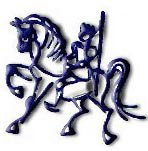

(ADA) American Dental Association
(WDA) Wisconsin Dental Association
(MDA) Milwaukee Dental Association
(AAO) American Association of Orthodontist
(AlOA) American Lingual Association International
![]()
C opyright©
2007 Dr. Niles Knight Bakke, D.D.S., M.S.
This photograph
shows specially designed braces on the lingual (inside) surface of the
teeth. For many adult patients, this orthodontic procedure is visually
appealing.
With "invisible" appliances, a small metal bracket is attached
to the lingual surface of the front teeth, metal bands are usually placed
on the back teeth (molars and sometimes bicuspids). The brackets are made
of a durable metal alloy that will not react to foods, or to the enamel
surface of the teeth. Brackets are held in place by an adhesive that provides
outstanding strength to resist the pressures of biting and chewing., The
adhesive does not permanently affect the enamel, and is removed at the
completion of the orthodontic treatment.
After the brackets are placed, a resilient archwire, individually contoured
by the orthodontist, is connected to each bracket, and each tooth is slowly
moved during treatment into the desired alignment for better appearance
and better bite. "Invisible braces" work on the same principles
as conventional appliances so they too must be adjusted every 4 to 6 weeks.
During the course of treatment you will be asked to make follow-up appointments
so the archwire tension can be readjusted as your teeth "move"
to their new position.



